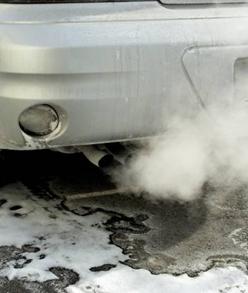Fuel consumption increases sharply in our harsh winters, which is both tough on your wallet as well as the environment. At -30°C fuel consumption increases by approximately 30 percent. When combined with short trips and idling, fuel consumption in winter can be as much as 50 percent greater.
To overcome the colder temperatures and thicker oil, more fuel needs to be pumped to the engine. Idling slows the process of warming your engine as the coolant (anti-freeze) does not circulate as well when idling as it does while driving. It will warms up much quicker if you drive it. In addition, it is not just your engine that needs to be warmed up in order for your vehicle to run efficiently. The transmission, wheel bearings, and even your tires must warm up as well and they can’t get warm sitting in the driveway.
The less efficient fuel combustion and the richer fuel mixture when your car is cold means a sharp increase in pollutants. Until your vehicle’s catalytic converter reaches peak operating temperature (between 400°C and 800°C), it does nothing, so the exhaust is going straight out the tail pipe untreated. The catalytic converter will also warm up quicker when your vehicle is driven.
In modern fuel injected engines, you need no more than 30 seconds of idling on cold winter days before driving away. Be sure to drive gently for the first few kilometres to allow your vehicle to warm up. Once your temperature gauge starts to move upward, you can start driving normally.
Just because it is colder outside does not mean that you should idle your vehicle for long periods of time to keep it warm. Even in winter we should try to be idle free. When you need to wait for a period of time, try turning off your car and then restarting it as it begins to cool, rather than running it continuously. If you open the window just a crack, it will reduce window fogging as well.
A block heater is great way to get your vehicle warmer, faster! The block heater will warm the engine coolant (anti-freeze) which will not only help you start your car more easily, but speed the delivery of heat to the inside of your car. There is no need to plug your car in all night; all you need is to plug in your car approximately 2 hours before you drive away. You can use a plug timer to make this happen automatically. If plugged in for any longer, the gains in fuel efficiency are lost in home electricity use!




Recent Comments